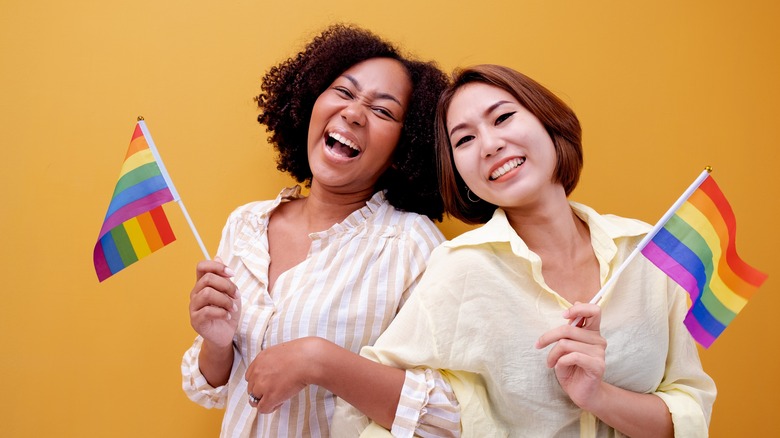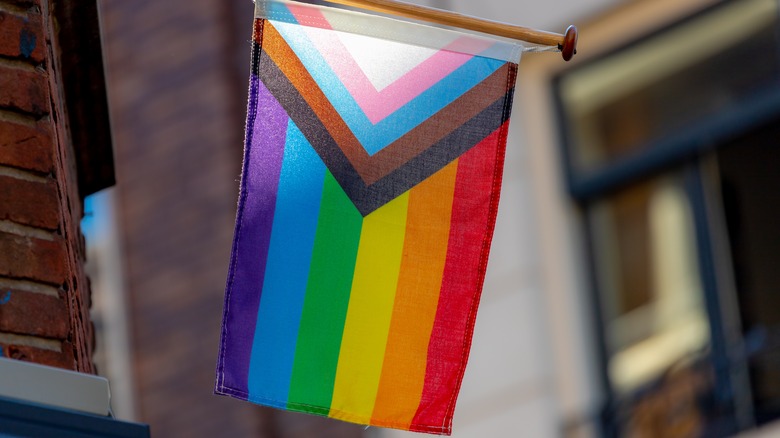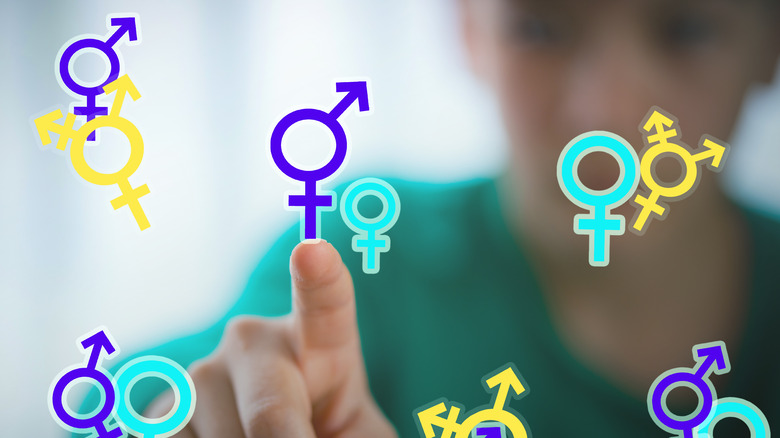What Does It Mean To Be Bigender?
Transgender. Nonbinary. Genderfluid. These are a few examples of the many labels and gender identities that exist in the LGBTQIA+ community. While the University of California explains that some people think of gender and deviations from the gender binary as relatively new development, it's more so that these historical identities are being reshaped in the modern world and moving a little more into mainstream consciousness (via TIME).
Those within this community continue to face many obstacles and issues, but Western culture is slowly becoming more aware of LGBTQIA+ issues and open to nonconforming representation in the media (per WeForum). Progress continues to be an ongoing fight, but such awareness also means that more people are learning about different identities and gender expressions.
If you're unfamiliar with these identities, each of which comes with its own pride flag, then learning about them can be a little intimidating. However, it's necessary to be informed in order to be respectful and inclusive of those around you. Along the way, you may even find yourself resonating with one of these labels.
So, with that in mind, read on to find out what it means to be bigender.
The basics of being bigender
To start, bigender is a gender identity that is classified under the umbrella term of transgender, according to Mind Body Green. In contrast to cisgender individuals, those who are transgender have a gender identity that does not correspond to the sex they were assigned at birth (per WebMD). Bigender individuals are also considered to be nonbinary, as their gender identity does not fit within the binary system of gender.
At its core, being bigender means identifying with two or more gender identities. As explained by Ted Lewis, the director of the Human Rights Campaign Foundation's All Children All Families program: "While bigender includes the prefix 'bi,' denoting two, the term has evolved and come to mean someone who identifies as more than one gender. That could be simultaneous, that could be fluctuating, but it means identifying beyond one gender" (via Seventeen).
For example, a bigender person could identify as both a man and a woman, either at the same time or alternatively (per Cosmopolitan). However, this identity is not limited to the binary but can include labels like agender, genderqueer, trans femme, etc.
In this way, expressions of bigenderism will vary depending on the person and their specific labels. It's also important to note that this gender identity does not come with set pronouns or sexual orientation, so you'll want to be mindful of this with the language you use to discuss gender.
How bigenderism relates to other identities
Knowing what it means to be bigender, you may be wondering how this identity relates to other labels. How bigenderism relates to nonbinarism and transgenderism has already been established, but it's important to note that not all bigender people will necessarily identify as nobinary and/or transgender (per Queer in the World).
According to Cosmopolitan, genderfluid is a gender identity that is similar to bigenderism in that both labels identify with more than one gender. Those who are genderfluid typically experience gender over a multitude of different identities, so someone who is bigender might also identify as genderfluid.
Bisexuality is a label that sounds similar to bigender, but the two refer to different things. Whereas bigenderism is a gender identity, bisexuality is a sexual orientation. A bisexual individual is someone who is attracted to more than one gender, while a bigender individual identifies with more than one gender. Though they are different, a person who is bigender can also identify as bisexual.


